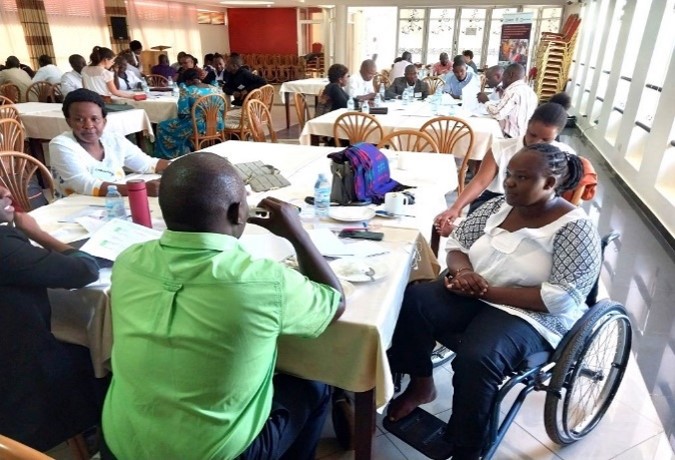
By Sarah Magoba for ReLAB-HS
Atim Joyce Mary is the founder of the Centre for Spinal Injuries Advocacy, a community-based organization in the town of Iganga in Eastern Uganda that advocates for girls and women living with spinal cord inquires. Joyce founded this organization after experiencing challenges in accessing a wheelchair. As a result of a motor vehicle crash, Joyce sustained a spinal cord injury, limiting her ability to walk. During her recovery, she struggled to locate assistive technology (AT) services that would provide her with a wheelchair. Joyce and her family members contacted different community-based organizations, seeking any AT support, with no success.
This continued for seven years. Not until her third visit to the Mulago National Referral Hospital did she manage to get her first wheelchair.
“My life was so challenging, the situation before was very hard, I spent seven years without AT support, I could not move out, which situation denied me so many opportunities and more so [I] developed secondary disabilities. The first time [I] got a wheelchair, I was very excited thinking the wheelchair was going to support me. However, to my greatest disappointment the wheelchair was not my right size, later [I] got additional secondary disabilities since there was no assessment done or follow up.”
Though Joyce was able to move and participate more in daily activities, the wheelchair she received was not appropriately fitted for her—it was too small for her and led to the development of secondary disabilities. Furthermore, neither Joyce nor her caretaker received any training on wheelchair usage, increasing the risk of injury.
In March 2023, ReLAB-HS invited Joyce to participate in a co-design workshop to contribute to the development of an improved service delivery model for rehabilitation and AT. The workshop was organized first around understanding the current situation for rehabilitation and AT service delivery. Given her experience as the founder of the Centre for Spinal Injuries Advocacy and as an AT user, her insights were highly valuable.
“To me this is a great opportunity to share the challenges we AT users face as during access of services, which is very hard, imagine travelling (20) kilometres to get access to AT, the waiting time alone and also not having the appropriate AT, the expensive costs and lack of ramps in public places.”
As a result of the workshop, Joyce and other rehabilitation and AT stakeholders produced a service delivery model, inclusive of referral pathways for AT services, designed to be responsive to identified gaps and barriers experienced by users and service providers. The model includes clearly defined roles and responsibilities for rehabilitation and AT personnel throughout all levels of the health system, which will support the provision of appropriate rehabilitation and AT services.
Joyce continues to be engaged in the effort to improve service delivery for rehabilitation and AT. Her organization will participate in the next workshop to validate the service delivery model, as well as the upcoming Training on Assistive Products, which strengthens primary health care workers’ skills to competently provide AT services, such as the provision of simple assistive products (along with training users in proper use), maintenance of products, and appropriate referral for access to more complex products and specialized services.
“I feel so happy to have been part of this workshop, because working together with other stakeholders to improve service delivery counts a lot in our lives, and if this model is implemented, persons in need of assistive devices will not go through the challenges I went through. Ever since I got a wheelchair, my life became so good, because I can access transport, have fellowship with my fellow colleagues, move around, sell something and make some money, which was not the situation before. If AT users get appropriate devices—imagine the change you will bring to their lives, especially women and girls.”